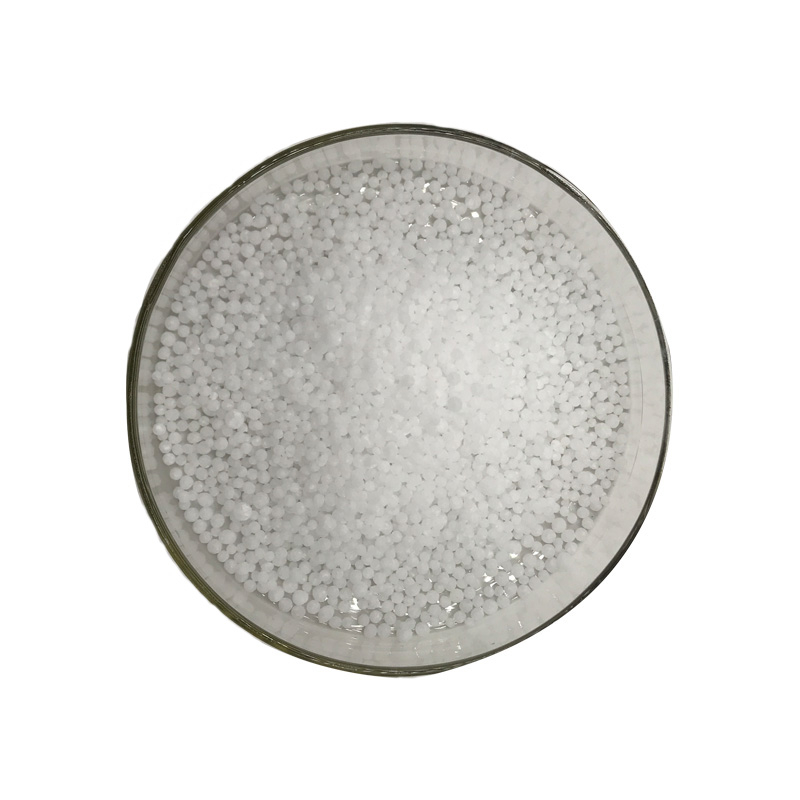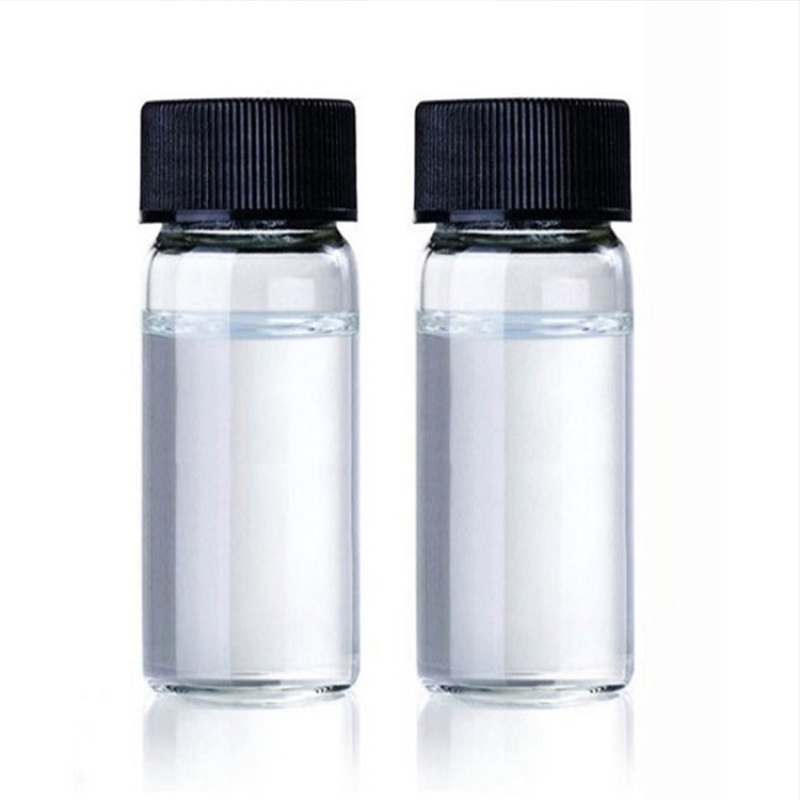Products Description of 2,5-Dimethyl-2,4-Hexadiene CAS#764-13-62,5-Dimethyl-2,4-hexadiene is a chemical,Insoluble in water, soluble in alcohol and ether.2,5-Dimethyl-2,4-hexadiene Chemical PropertiesMelting point 12 °CBoiling point 132134°Cdensity 0.773 g/mL at 25 °C(lit.)vapor density 3.8 (vs air)vapor pressure 26.9 mm Hg ( 37.7 °C)refractive index n20/D 1.476(lit.)Fp 85 °Fstorage temp. Flammables areasolubility Chloroform, Ethyl Acetateform Oilcolor Clear ColourlessBRN 1733342LogP3.500CAS DataBase Refer
Contact Now
Urea CAS#57-13-6The urea molecule is planar in the crystal structure, but the geometry around the nitrogens is pyramidal in the gas-phase minimum-energy structure. In solid urea, the oxygen center is engaged in two N-H-O hydrogen bonds. The resulting dense and energetically favourable hydrogen-bond network is probably established at the cost of efficient molecular packing: The structure is quite open, the ribbons forming tunnels with square cross-section.
Contact Now
Products Description of Methylcyclopentadienyl manganese tricarbonyl CAS#12108-13-3Methylcyclopentadienyl manganese tricarbonyl, a metallic manganese compound. Combustible, highly toxic, decomposes into toxic manganese oxide fumes in fires.
Contact Now
Products Description of Bretazenil CAS#84379-13-5Brotacetin is a partial agonist of the GABAA receptor of the benzodiazepine class. It was first developed by Roche as an antianxiety drug. Studies have found that brotacetin can counteract the spasms caused by pentamethazine. At an antispasmodic dose (125-250 μg·kg-1), brotacetin combined with pyridostigmine (100 μg·kg-1, im) and aprofen (4 mg·kg-1, im) can prevent sarin and soman poisoning. Brotacetin has good antianxiety activity at a dose of 50-400 μg·kg-1. Compared with diazepam, it has little adverse reaction of myasthenia.
Contact Now
Products Description of Urea CAS#57-13-6When the temperature is below 20℃ and the relative humidity is below 70%, urea not only does not absorb moisture, but also evaporates water to reduce its water content; when the temperature exceeds 20℃ and the relative humidity is higher than 80%, it begins to absorb moisture, and in severe cases, it becomes a paste. When the air turns dry again, it will re-agglomerate, and its degree is second only to ammonium nitrate.
Contact Now
Products Description of Pyridine hydrochloride CAS#628-13-7Pyridine, an organic compound, is a six-membered heterocyclic compound containing a nitrogen atom. It can be regarded as a compound in which one (CH) in the benzene molecule is replaced by N, so it is also called nitrogen benzene. It is a colorless or slightly yellow liquid with a foul odor. Pyridine and its homologues exist in bone tar, coal tar, coal gas, shale oil, and petroleum.
Contact Now
Products Description of Diethyl Ethoxymethylenemalonate CAS#87-13-8Ethoxymethylene, also known as diethyl ethoxymethylenemalonate, is a colorless, transparent and viscous liquid. It is an important pharmaceutical intermediate and is widely used in the synthesis of medicines, pesticides and auxiliaries.
Contact Now
Nicotinic Acid CAS# 59-67-6 Vitamin B3Nicotinic Acid (Nicotinic Acid, also known as Vitamin B₃, CAS number 59-67-6, is extremely important in human metabolism, medicine and industry. Its molecular formula is \(C_6H_5NO_2\) and its molecular weight is 123.11. Chemical name pyridine-3-carboxylic acid, belongs to the pyridine derivatives. It is one of the 13 essential vitamins in the human body and is involved in many important metabolic processes in the body.
Contact Now
Methylcyclopentadienyl Manganese Tricarbonyl CAS# 12108-13-3Manganese, tricarbonyl methylcyclopentadienyl is a dark orange liquid. Faintly pleasant, herb-like odor. Molecular weight= 218.10;Boiling point=232℃; Freezing/Melting point=18℃; Flash point=74℃; 96℃. Hazard Identification (based on NFPA-704 M Rating System): Health 3, Flammability 0, Reactivity 0.
Contact Now
Products Description of Sodium 4-amino-1-naphthalenesulfonate CAS#130-13-2White or off-white flaky crystals. Easily soluble in water, soluble in 95% ethanol, insoluble in ether, slightly soluble in concentrated caustic alkali aqueous solution and ethanol solution. It is an important azo pigment intermediate, widely used in the synthesis of direct dyes and reactive dyes.
Contact Now
Acrylonitrile CAS#107-13-1 Acrylonitrile is a colourless, flammable liquid. Its vapours might also explode when uncovered to an open flame. Acrylonitrile does now not take place naturally. It is produced in very giant quantities through numerous chemical industries in the United States, and its requirement and demand are growing in latest years. Acrylonitrile is a closely produced, unsaturated nitrile.
Contact Now
Products Description of Kavain CAS#3155-48-4White crystalline powder, soluble in organic solvents such as methanol, ethanol, DMSO, etc., derived from Kava pepper.Kavain Chemical PropertiesMelting point 142-148 °CBoiling point 432.6±45.0 °C(Predicted)density 1.15±0.1 g/cm3(Predicted)storage temp. Amber Vial, -20°C Freezer, Under inert atmospheresolubility Chloroform (Slightly), Ethyl Acetate (Slightly)color Off-White to Pale YellowBRN 177877Stability:Light and Moisture SensitiveInChIInChI=1S/C14H14O3/c1-16-13-9-12(17-14(15)10-13)8-7-11-5-3-2-4-6-11/h
Contact Now
Products Description of PyridiniumCAS#68909-18-2White powderPyridinium, 1-(phenylmethyl)-, ethyl methyl derivs., chlorides Chemical PropertiesBoiling point 116.34℃[at 101 325 Pa]density 1.104[at 20℃]vapor pressure 2hPa at 20℃Water Solubility 100g/L at 30℃InChIInChI=1S/C13H16N.ClH/c1-14(10-6-3-7-11-14)12-13-8-4-2-5-9-13;/h2-10H,11-12H2,1H3;1H/q+1;/p-1InChIKeyNBNVYJFZJWMHPR-UHFFFAOYSA-MSMILESC1[N+](CC2=CC=CC=C2)(C)C=CC=C1.[Cl-]LogP3 at 25℃EPA Substance Registry System1-(Phenylmethyl)pyridinium Et Me derivs., chlorides (68909-18-2)Factory and Equipment ShowFast delivery t
Contact Now
4,4'-DIBROMO-2,2'-BIPYRIDINE Chemical PropertiesMelting point 138.0 to 142.0 °CBoiling point 362.9±37.0 °C(Predicted)density 1.809±0.06 g/cm3(Predicted)storage temp. Keep in dark place,Sealed in dry,Room Temperaturesolubility soluble in Tolueneform powder to crystalpka2.59±0.18(Predicted)color White to Light yellowInChIInChI=1S/C10H6Br2N2/c11-7-1-3-13-9(5-7)10-6-8(12)2-4-14-10/h1-6HInChIKeyKIIHBDSNVJRWFY-UHFFFAOYSA-NSMILESC1(C2=NC=CC(Br)=C2)=NC=CC(Br)=C1CAS DataBase Reference18511-71-2Safety InformationRisk Statements 36/37/38Safety Statements&nb
Contact Now
Products Description of 5-Chloro-2-(methylamino)benzophenone CAS#1022-13-5Yellow or reddish yellow granular crystals.5-Chloro-2-(methylamino)benzophenone Chemical PropertiesMelting point 93-95 °C (lit.)Boiling point 421.9±35.0 °C(Predicted)density 1.234±0.06 g/cm3(Predicted)storage temp. Keep in dark place,Inert atmosphere,Room temperaturesolubility Chloroform (Slightly), Dichloromethane (Slightly), DMSO (Slightly), Methanol (Very Slightly)form SolidpkapKa 1.45±0.04(7% EtOH in H2O,t =25,0.02 to 0.40M in HCl) (Uncertain)color Light Yellow to YellowBRN&nbs
Contact Now
Products Description of (1H-indol-3-yl)(2,2,3,3-tetramethylcyclopropyl)methanone CAS#895152-66-6White powder(1H-indol-3-yl)(2,2,3,3-tetramethylcyclopropyl)methanone Chemical PropertiesBoiling point 375.0±15.0 °C(Predicted)density 1.099±0.06 g/cm3(Predicted)storage temp. 2-8°Csolubility DMF: 50 mg/ml; DMF:PBS (pH 7.2); (1:7): 0.13 mg/ml; DMSO: 33 mg/ml; Ethanol: 17 mg/mlform A crystalline solidpka15.50±0.30(Predicted)InChIInChI=1S/C16H19NO/c1-15(2)14(16(15,3)4)13(18)11-9-17-12-8-6-5-7-10(11)12/h5-9,14,17H,1-4H3InChIKeyWYZQBEQQQKCTHM-UHFFFAOYSA-NSMILESC(C1C2=C(NC=1)
Contact Now
Products Description of Antioxidant CAS#27676-62-6 Antioxidant 3114 is a hindered phenol antioxidant with three functional groups. It is non-polluting and non-coloring. Due to its high molecular weight and melting point, it has extremely low volatility, low migration, good water extraction resistance, and can give plastics excellent resistance to thermal oxidation and light oxidation. This product can be used for polyolefin products that come into contact with food (can come into contact with fatty and non-fatty foods).
Contact Now
Products Description of 6-AMINOISOQUINOLINE CAS#23687-26-56-Aminoisoquinoline is a nitrogen heterocyclic compound. Nitrogen heterocyclic compounds have very good medicinal value and medical value.
Contact Now
Products Description of 6-Chloropyridazin-3-amine CAS#5469-69-23-Amino-6-chloropyridazine is a novel pharmaceutical intermediate with great medical value and is difficult to synthesize. 3-Amino-6-chloropyridazine compounds are a class of heterocyclic compounds with good biological activity and occupy an important position in pesticide research. In pesticide production, structural modification using pyridazinone ring as the parent has opened up a new field for the creation of new pesticides.
Contact Now
Products Description of 3-Chloro-6-methylpyridazine CAS#1121-79-53-Chloro-6-methylpyridazine is a heterocyclic compound and chemical raw material. It has a low melting point and boiling point, and is usually light yellow to light beige in powder form.
Contact Now
Products Description of 2-Amino-6-chlorobenzoic acid CAS#2148-56-32-Amino-6-chlorobenzoic acid is a reactive compound that can be used as an antimicrobial agent. It binds to the active site of enzymes and inhibits their function, thereby preventing bacterial growth. It has acidic properties, which may be due to its ability to act as a dehydrating agent to hydrolyze esters.
Contact Now
Products Description of DecamethylcyclopentasiloxaneCAS#541-02-6Decamethylcyclopentasiloxane (cyclopentasiloxane) is a colorless, odorless, volatile liquid cyclic siloxane. It is safe and environmentally friendly and has been widely used in health and beauty products such as deodorants, antiperspirants, cosmetics, shampoos, body lotions, etc.
Contact Now
Products Description of 6-Bromo-1-chloroisoquinoline CAS#205055-63-61-Chloro-6-bromoisoquinoline is a pharmaceutical intermediate and a yellow powdery solid.6-Bromo-1-chloroisoquinoline Chemical PropertiesBoiling point 349.5±22.0 °C(Predicted)density 1.673storage temp. under inert gas (nitrogen or Argon) at 2-8°Cpka1.48±0.38(Predicted)form powdercolor Light yellow to yellowSafety InformationHazard Codes TRisk Statements 25-38-41Safety Statements 26-45RIDADR UN2811HS Code 2933499090Product Application of 6-Bromo-1-chloroisoquinoline CA
Contact Now
Products Description of 6-bromo-1,2,3,4-tetrahydroisoquinoline CAS#226942-29-66-bromo-1,2,3,4-tetrahydroisoquinoline is a solid chemical with a CAS number of 226942-29-6. 6-bromo-1,2,3,4-tetrahydroisoquinoline Chemical PropertiesBoiling point 283℃density 1.428Fp 125℃storage temp. under inert gas (nitrogen or Argon) at 2–8 °Cpka9.26±0.20(Predicted)form SolidCAS DataBase Reference226942-29-6Product Application of 6-bromo-1,2,3,4-tetrahydroisoquinoline CAS#226942-29-66-Bromo-1,2,3,4-tetrahydroisoquinoline is only used for scientific research.Fact
Contact Now

































